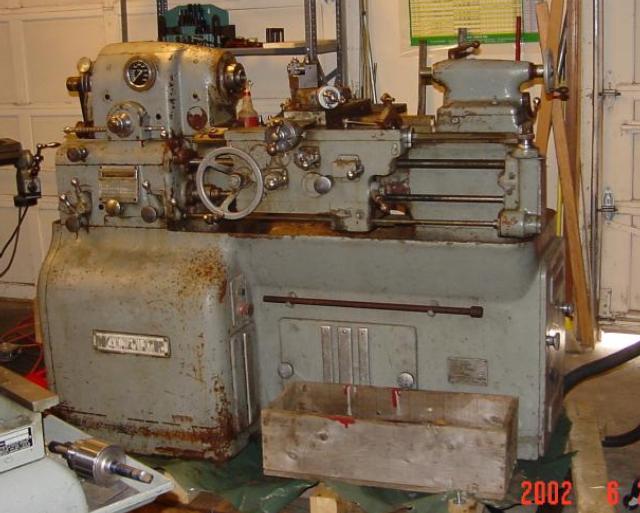Briney Eye
Plastic
- Joined
- Sep 23, 2016
Follow along with the video below to see how to install our site as a web app on your home screen.
Note: This feature may not be available in some browsers.
I agree with labeeman and I'm 99% sure that this is a replacement for a failed exciter on a motor/generator 10EE. The transformer in the upper left probably steps the incoming AC sufficiently that it can be rectified to produce the 115 Volts DC that the system need to replace the output of the exciter. The variable transformer in the upper right is used to adjust the output of the step-up transformer so that the output voltage is correct. The meter lets you easily adjust the variable transformer which is a one-time thing; there's no need for a permanently installed meter, but maybe they had one laying around. The row of square fins in the bottom of the cabinet is a selenium rectifier, which is what converts the AC from the step-up transformer and the variable transformer into DC. Once the variable transformer had been adjusted to produce the correct output voltage it shouldn't need to be adjusted again.This 1942 10EE is about a two-hour drive from me, and I'm wondering what this modification is doing. Exciter?
View attachment 288593
I retired from Sandia Labs last year, and we had literal acres of machine shop, but I don't recall any 10ee's. They must have had them, but I didn't know enough to notice back then. The shop eventually priced itself out of existence a few years before I retired, and I don't know what happened to all the machines. Government agencies would have had first crack at them, but anything unclaimed would have gone up for auction.
I retired from Sandia a few years ago as a contractor (worked for 9954 subbed to 5528 and others). Walked daily past the big old machining building west across from the primary standards building and wondered what it might have been like back when it was loaded with machinery. I saw some of that machinery being auctioned at Bentley's over the years, one time there were a dozen 10EEs lined up for sale. The Hardinge UM mill in my shop came from LANL and a fair amount of other stuff but my 10EE came from Rockford IL.
When I started in 1981 the Machine Shop was a thing to behold. I think the Inspection room must have been 8 or 10,000 square feet, all glassed in, everybody in lab coats. The Tool Crib was probably around 2000 square feet. They had it all, too. From the Miniature Shop where they could make microscopic components up to near Oil Patch size lathes, and a turntable I saw them turning a nose cone on one time. It was probably the Test Ban (and the Internet) that put them under. Without lots of new high-dollar programs the overhead just killed them. The last time I was there putting in a job I overheard a Volcanically Pissed Off department manager disputing a charge with one of the shop Leads, along the lines of "How the Hell can this little job have possibly cost $25k?!!" Everybody just started sending out their jobs, Management wasn't able to renegotiate the union contract, and poof! they were gone.
-Jon
“10EE came from Rockford IL.”
I wonder if your 10EE was from Barber Colman and it was used to build my #3 hobber. But then, decades before Rockford ranked highest in the country on the misery index, it was a hugely successful industrial city with many companies. Somebody actually wrote a history of Rockford, which I bought and read after getting my gear machine.

Friends who were working there (including some from the shop) thought the DOE Safety "Tiger" Teams killed a lot of it, I know they poisoned the environment for my dad who left mostly as a result of their rampage through area 1.
Notice
This website or its third-party tools process personal data (e.g. browsing data or IP addresses) and use cookies or other identifiers, which are necessary for its functioning and required to achieve the purposes illustrated in the cookie policy. To learn more, please refer to the cookie policy. In case of sale of your personal information, you may opt out by sending us an email via our Contact Us page. To find out more about the categories of personal information collected and the purposes for which such information will be used, please refer to our privacy policy. You accept the use of cookies or other identifiers by closing or dismissing this notice, by scrolling this page, by clicking a link or button or by continuing to browse otherwise.
